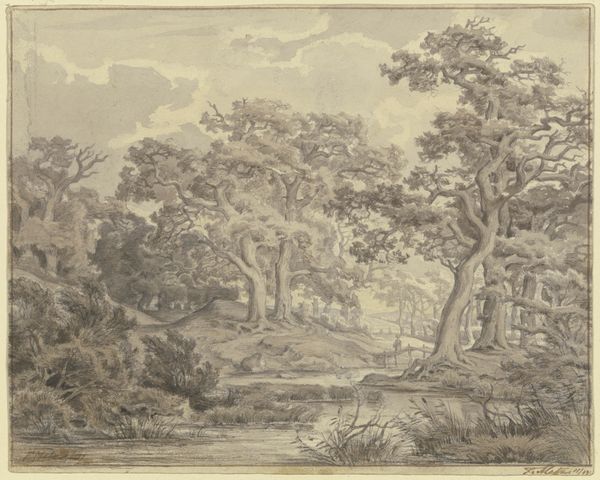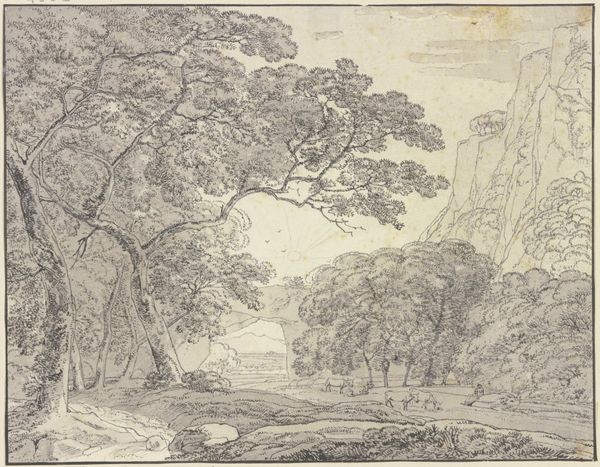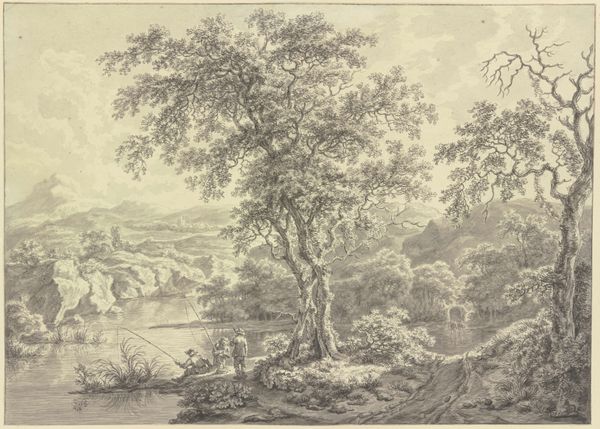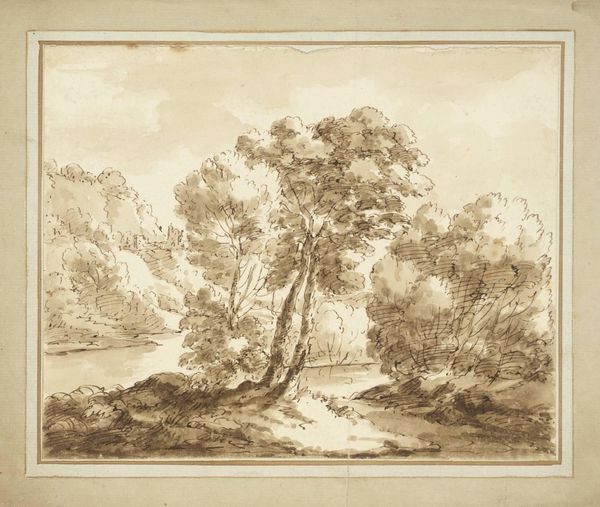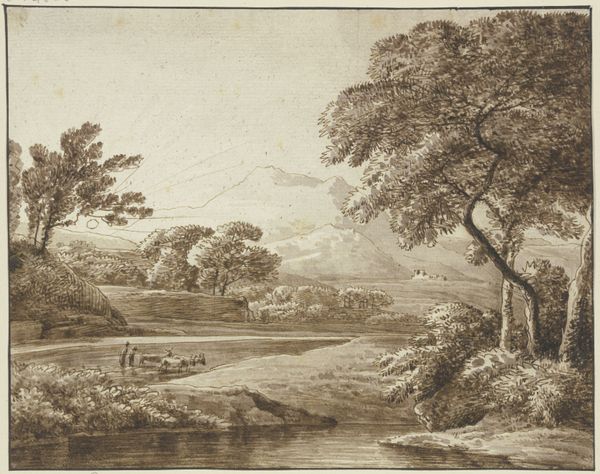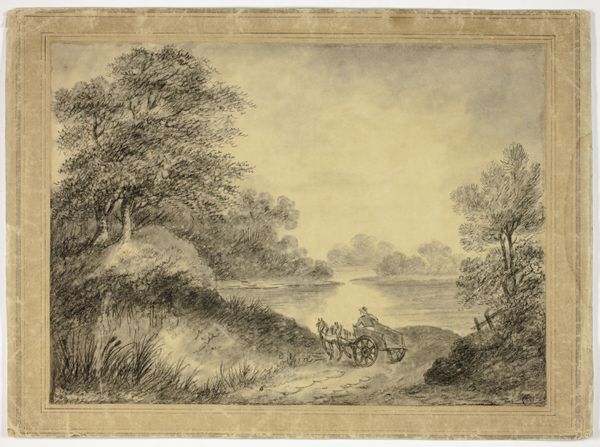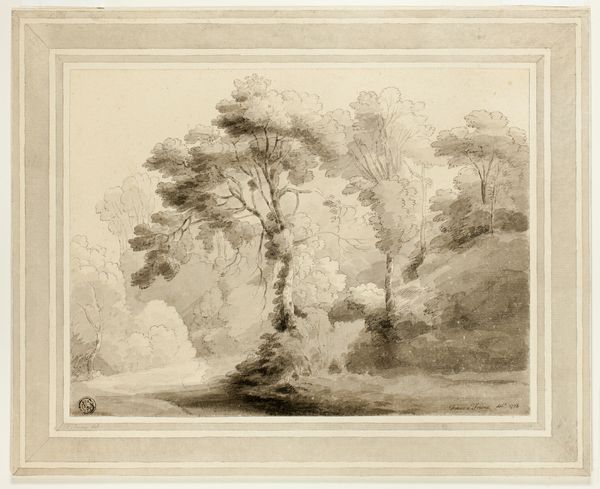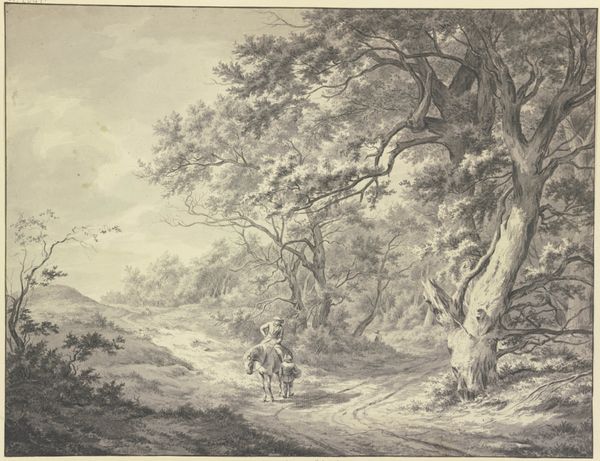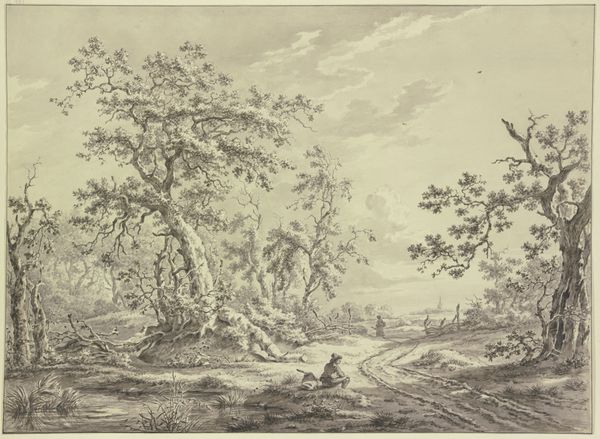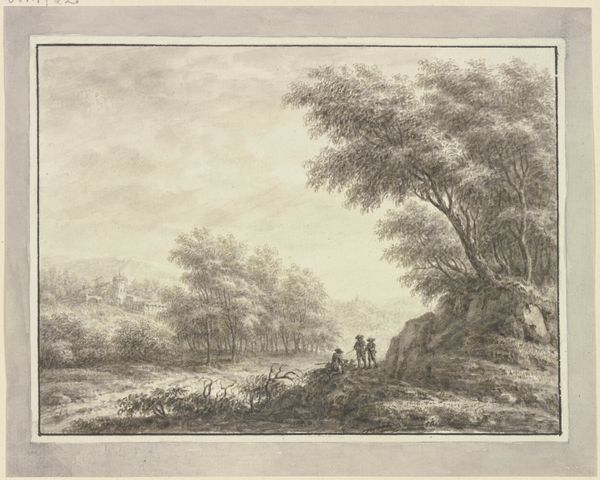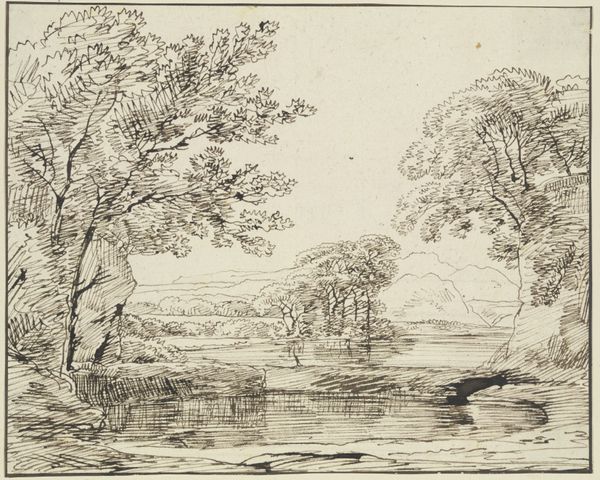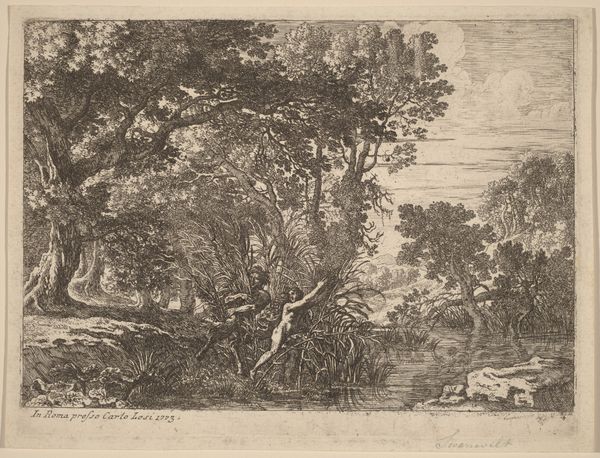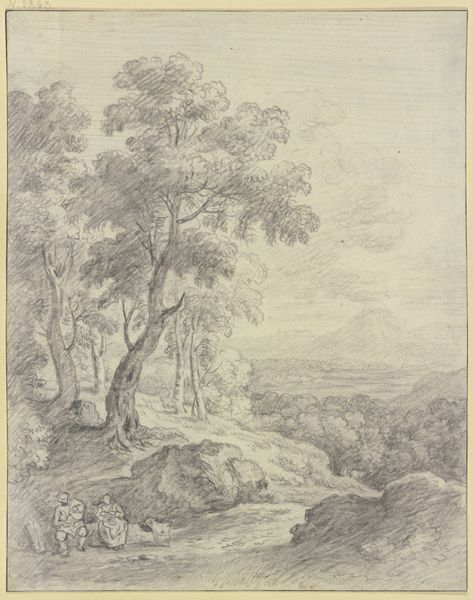
drawing, pencil, chalk
#
drawing
#
baroque
#
landscape
#
pencil drawing
#
pencil
#
chalk
#
14_17th-century
Copyright: Public Domain
Curator: This is Simon de Vlieger’s “Stream at the Edge of the Forest,” currently held at the Städel Museum. The artist worked in pencil and chalk, giving the piece a delicate, almost ethereal quality. Editor: My immediate response is a sense of quiet solitude. The grey tones are incredibly subtle. It's almost monochromatic and muted, the forest depicted seems untouched, undisturbed. Curator: The use of these modest materials certainly draws us to consider the social status of landscape art during this time. What was it meant to depict, who was it for? The relative affordability and ease of working with pencil and chalk surely played a role in broadening access. How might that affect our reading of it as landscape? Editor: That is insightful. To me, the drawing reflects a deep engagement with the land. Look at the detailed layering of strokes to build volume. One might assume that paper was itself more of a luxury, a commodity shaped by trade routes and mills and class. Perhaps Vlieger, then, mediates these material circumstances. Curator: Yes, and the image of the forest itself needs unpacking. Whose access to these areas are represented here? Where is the evidence of labor, hunting, foraging? Or is that the entire point – a scene abstracted from human context to focus instead on what the land *could* represent? The rising merchant class? A place for the enlightened gentry away from labour? Editor: I see the absence too. There’s labor implicit in the very rendering of the scene. Vlieger labored to bring this image into being! Think of the chalk: sourced, refined, distributed. And the paper; the means of its making, pulp and press, all unseen in the final image but inherently social in their construction. Curator: Precisely. What does it mean, in a broader history of representation, to present nature so emptied of social conflict or visible industry? Does this idealised version speak to contemporary issues surrounding land ownership and use? Editor: By focusing on these material conditions and omissions, the artwork expands far beyond just a picturesque view. Curator: Absolutely, and examining these contextual threads allows us to view the artwork as not just an aesthetic object but as an active participant in social narratives. Editor: I appreciate seeing the artistic choices, material conditions, and possible absences within the depicted forest, recognizing it as a site both produced and productive of social relations.
Comments
No comments
Be the first to comment and join the conversation on the ultimate creative platform.
